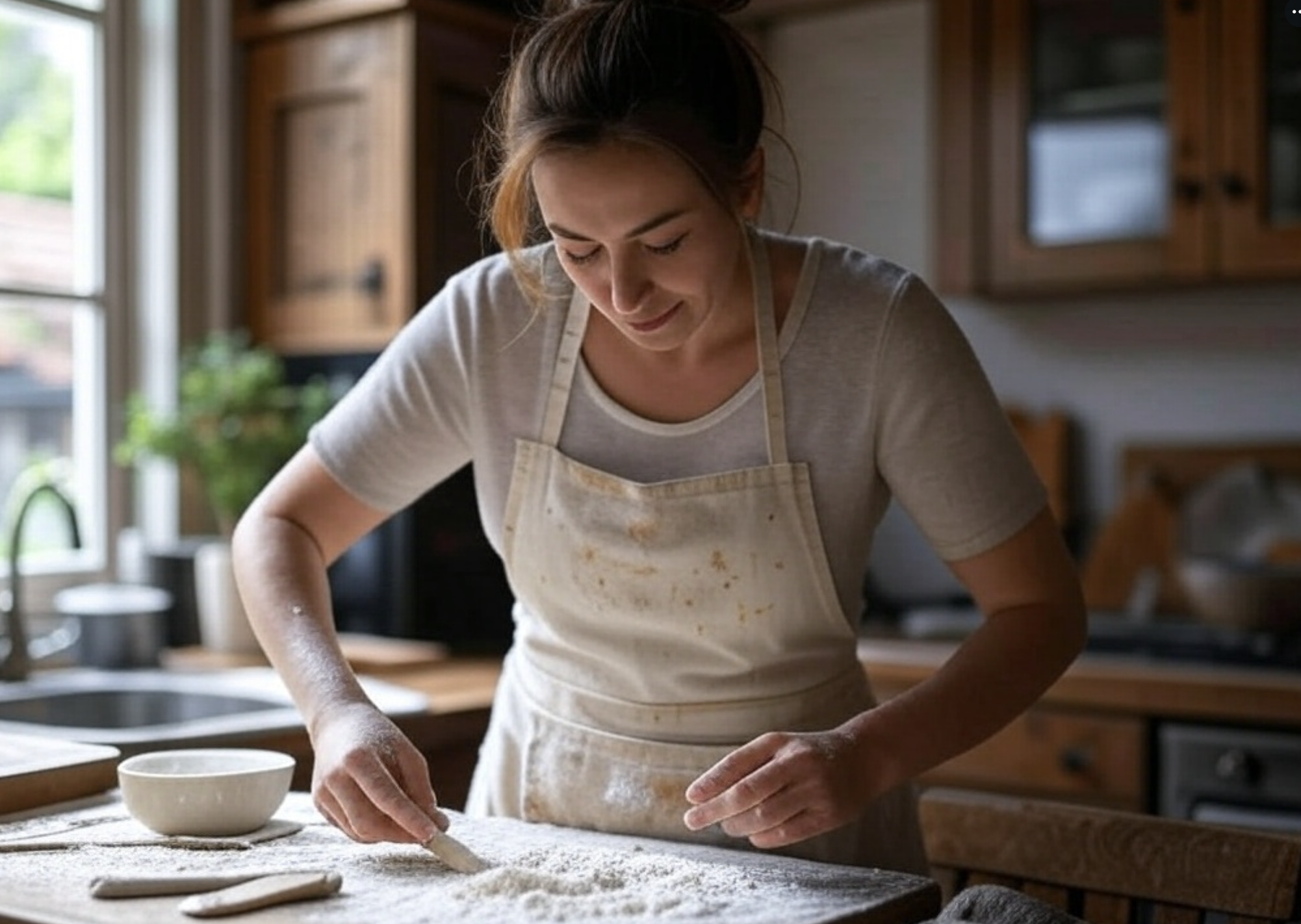Baking Measurement Conversion Calculator: Convert Between Metric, Cups & Imperial Units
Baking Conversion Tool
Enter your recipe ingredients and choose your desired conversion type. Our tool handles metric, cups, and imperial measurements, plus temperature conversions.
Ingredients
Ingredient Entry: You can add up to 30 ingredients. For flour, specify "sifted" or "unsifted" in the ingredient text if needed (defaults to sifted).
Flexible Input Formats: Enter ingredients as "2 cups flour" or "flour 6 cups" - both formats work!
Baking Temperature
Common Baking Temperatures:
Convert to grams, milliliters, etc.
Convert to cups, tablespoons, etc.
Convert to ounces, pounds, etc.
How to Use the Baking Conversion Calculator
This calculator is designed to handle complexity of baking conversions while keeping the process simple to use.
- Enter your ingredients - Add each ingredient with its quantity, unit, and name. For flours, specify whether they're sifted or unsifted.
- Input baking temperature - If your recipe includes an oven temperature, enter it in Fahrenheit or Celsius.
- Choose conversion type - Select whether you want to convert to metric, cups, or imperial measurements.
- Adjust advanced settings (optional) - Fine-tune scaling factors, smart scaling for leavening agents, and output formatting.
- Convert your recipe - Click the "Convert Recipe" button to see your converted measurements.
- Save or print results - Use the copy or print functions to save your converted recipe.
The calculator accounts for ingredient-specific densities and provides confidence scores for each conversion, helping you identify where additional attention might be needed. Reach out to me if you're trying to add ingredients with low conversion confidence scores in the results section.
Why Accurate Recipe Conversion Matters with Baking
Unlike cooking, where you can often adjust seasonings and ingredients to taste, baking relies on chemical reactions that require exact proportions.
Kristin Hoffman, better known as "Baker Bettie" online, is a professional baking instructor who advocates for precision in home baking stresses, "Baking is an exact science and it's extremely important that you know how to measure your ingredients properly."
John Kanell emphasizes the importance of proper measurement techniques: "The best way to measure flour with a measuring cup is to fluff it up… Fluff, fluff, fluff, sprinkle, sprinkle, sprinkle. It takes a minute, I'm not going to lie to you, but taking a minute and having a delicious baked good versus just scooping it up and having something horrible… which would you choose?"
Common Reasons People Need Recipe Conversions
Based on discussions in online forums like Reddit's r/Baking and r/AskCulinary, these seem to be the scenarios bakers need conversion help the most.
- International Recipes - Following recipes from cookbooks or websites from different countries (US recipes using cups vs. European recipes using grams).
- Scaling Recipes - Adjusting recipe quantities to make larger batches for events or smaller portions.
- Precision Baking - Converting volume measurements to weight for greater accuracy.
- Substitutions - Working with ingredient substitutions that have different densities.
- Vintage Recipes - Modernizing family recipes that use outdated measurements. My mom did this with some old Mennonite recipes in a cookbook my grandmother had.
Common Baking Measurement Conversions
The calculator accounts for ingredient-specific densities and provides confidence scores for each conversion, helping you identify where additional attention might be needed. Here are the basic measurement conversion I built into this tool.
Volume Measurements
| US Measurement | Metric Equivalent |
|---|---|
| 1 teaspoon (tsp) | 4.93 milliliters (ml) |
| 1 tablespoon (tbsp) | 14.79 milliliters (ml) |
| 1 fluid ounce (fl oz) | 29.57 milliliters (ml) |
| 1 cup | 236.59 milliliters (ml) |
| 1 pint | 473.18 milliliters (ml) |
| 1 quart | 946.35 milliliters (ml) |
| 1 gallon | 3.79 liters (L) |
Weight Measurements
Hoffman (AKA Baker Bettie) strongly recommends using weight-based measurements: "I'd really like to encourage you to start learning how to measure by grams because that is the smallest form of measurement and going to be the most accurate."
| US Measurement | Metric Equivalent |
|---|---|
| 1 ounce (oz) | 28.35 grams (g) |
| 1 pound (lb) | 453.59 grams (g) |
Common Baking Temperatures
| Fahrenheit (°F) | Celsius (°C) | Gas Mark | Common Use |
|---|---|---|---|
| 325°F | 165°C | 3 | Slow baking, meringues |
| 350°F | 177°C | 4 | Cookies, cakes, quick breads |
| 375°F | 190°C | 5 | Pies, pastries |
| 400°F | 205°C | 6 | Breads, rolls |
| 425°F | 220°C | 7 | Pizza, crispy items |
| 450°F | 230°C | 8 | High heat baking |
Ingredient-Specific Weight-to-Volume Conversions
I spent a lot of time adding ingredient specific weight-to-volume measuremets for this tool. I added oils, water, and other ingredients like raisins, nuts, and chocolate chips that are often used in baking.
Thanks to John Kanell, Preppy Kitchen, I also spent a lot of time understanding the difference between sifted / unsifted flour and built these distinctions into the tool. "The reason [a recipe failed] might've been a mismeasurement of flour. Flour is actually notoriously difficult to measure correctly with a measuring cup."
| Ingredient | 1 Cup Equals | Notes |
|---|---|---|
| All-purpose flour (unsifted) | 125-130g | Weight varies based on humidity and brand |
| All-purpose flour (sifted) | 115g | Sifting incorporates air, reducing weight |
| Cake flour | 115-120g | Lighter than all-purpose flour |
| Granulated sugar | 200g | Fairly consistent weight |
| Brown sugar (packed) | 220g | Must be firmly packed for accurate measurement |
| Powdered sugar (unsifted) | 125g | Tends to clump; sifting recommended |
| Butter | 227g (8oz) | Equal to 2 sticks in US measurements |
| Cocoa powder (unsifted) | 100-105g | Can clump easily; sifting recommended |
Jennifer Jacobs, owner and founder of Wandering Whisk Bakeshop in St. Petersburg, Florida, also stressed to me how ingredient precision impacts professional baking. "Brown sugar's trick. Pack it too tight, and your cookies spread like pancakes. Stick to grams for a foolproof measure every time."
Tips for Better Baking Conversions
- Measure by weight when possible - Professional bakers prefer weight measurements (grams) over volume (cups) for consistency and accuracy.
- Consider ingredient density - Sifted vs. unsifted flour can vary by 10-15% in weight for the same volume.
- Be careful with leavening agents - Baking powder and baking soda don't always scale linearly when increasing recipe size.
- Allow for regional variations - Ingredients like flour can vary by brand and region, affecting conversion accuracy.
- Use standard measuring tools - A 'cup' in US recipes is 236.59ml, while a 'cup' in UK recipes is 284.13ml (almost 20% more).

FAQs About Baking Measurement Conversion
Is a cup the same in all countries?
No. A US cup (236.59ml) differs from a UK/imperial cup (284.13ml), which is about 20% larger. Our calculator uses US standard cups by default.
Why do professional bakers prefer weight over volume?
Weight measurements are more accurate and consistent. Volume measurements can vary based on how ingredients are packed, whether they're sifted, and even the measuring cup used.
How important is it to sift flour?
Sifting flour aerates it, making it lighter. One cup of unsifted flour weighs about 130g, while one cup of sifted flour weighs about 115g. This difference can significantly impact delicate recipes.
Can I simply double all ingredients to double a recipe?
Not always. While most ingredients scale linearly, leavening agents like baking powder often need less than a direct proportion when scaling up. Our calculator's "smart scaling" feature accounts for this.
Related Baking Calculators and Tools
If you found this baking conversion calculator helpful, you might also be interested in these related tools I built:
- Recipe Resizing Calculator - Easily scale your recipes up or down for different serving sizes.
- Bakery Business Calculator - Calculate startup costs, revenue projections, and break-even points for a bakery business.
Remember: This calculator provides estimates based on generally accepted conversion rates. The exact weight-to-volume ratio can vary based on factors like humidity, ingredient brands, and preparation methods.
